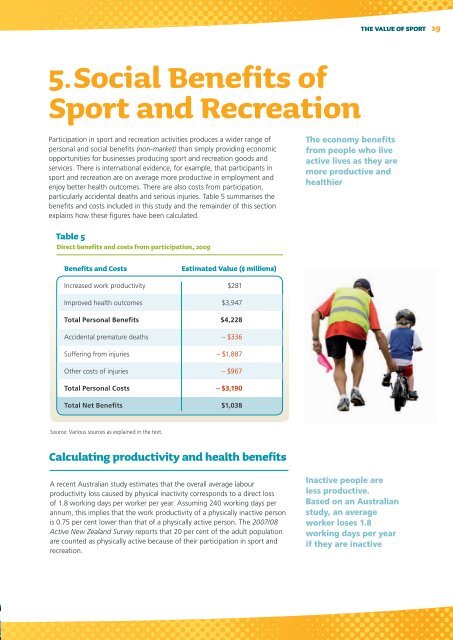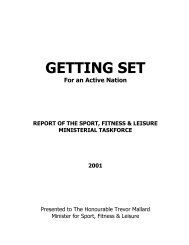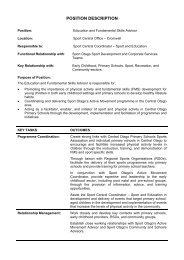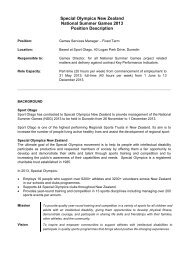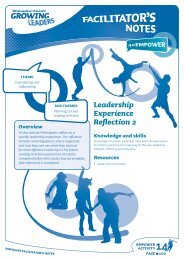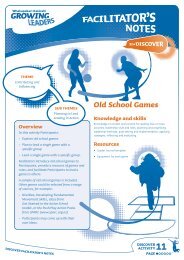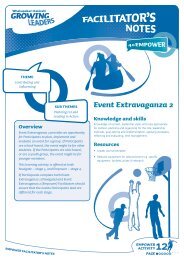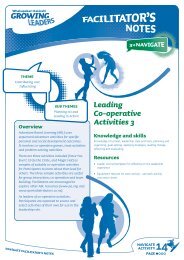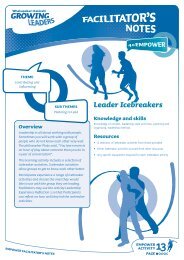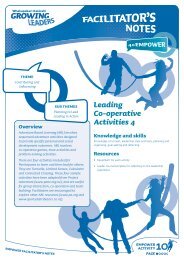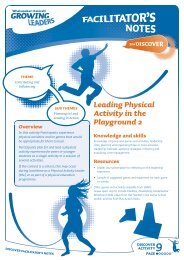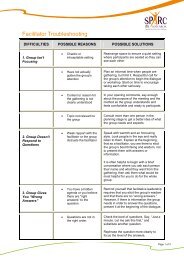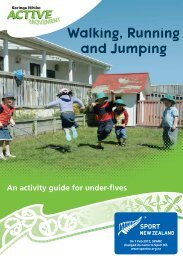An Overview - Sport New Zealand
An Overview - Sport New Zealand
An Overview - Sport New Zealand
Create successful ePaper yourself
Turn your PDF publications into a flip-book with our unique Google optimized e-Paper software.
THE VALUE OF SPORT<br />
19<br />
5. Social Benefits of<br />
<strong>Sport</strong> and Recreation<br />
Participation in sport and recreation activities produces a wider range of<br />
personal and social benefits (non-market) than simply providing economic<br />
opportunities for businesses producing sport and recreation goods and<br />
services. There is international evidence, for example, that participants in<br />
sport and recreation are on average more productive in employment and<br />
enjoy better health outcomes. There are also costs from participation,<br />
particularly accidental deaths and serious injuries. Table 5 summarises the<br />
benefits and costs included in this study and the remainder of this section<br />
explains how these figures have been calculated.<br />
The economy benefits<br />
from people who live<br />
active lives as they are<br />
more productive and<br />
healthier<br />
Table 5<br />
Direct benefits and costs from participation, 2009<br />
Benefits and Costs<br />
Estimated Value ($ millions)<br />
Increased work productivity $281<br />
Improved health outcomes $3,947<br />
Total Personal Benefits $4,228<br />
Accidental premature deaths – $336<br />
Suffering from injuries – $1,887<br />
Other costs of injuries – $967<br />
Total Personal Costs – $3,190<br />
Total Net Benefits $1,038<br />
Source: Various sources as explained in the text.<br />
Calculating productivity and health benefits<br />
A recent Australian study estimates that the overall average labour<br />
productivity loss caused by physical inactivity corresponds to a direct loss<br />
of 1.8 working days per worker per year. Assuming 240 working days per<br />
annum, this implies that the work productivity of a physically inactive person<br />
is 0.75 per cent lower than that of a physically active person. The 2007/08<br />
Active <strong>New</strong> <strong>Zealand</strong> Survey reports that 20 per cent of the adult population<br />
are counted as physically active because of their participation in sport and<br />
recreation.<br />
Inactive people are<br />
less productive.<br />
Based on an Australian<br />
study, an average<br />
worker loses 1.8<br />
working days per year<br />
if they are inactive


